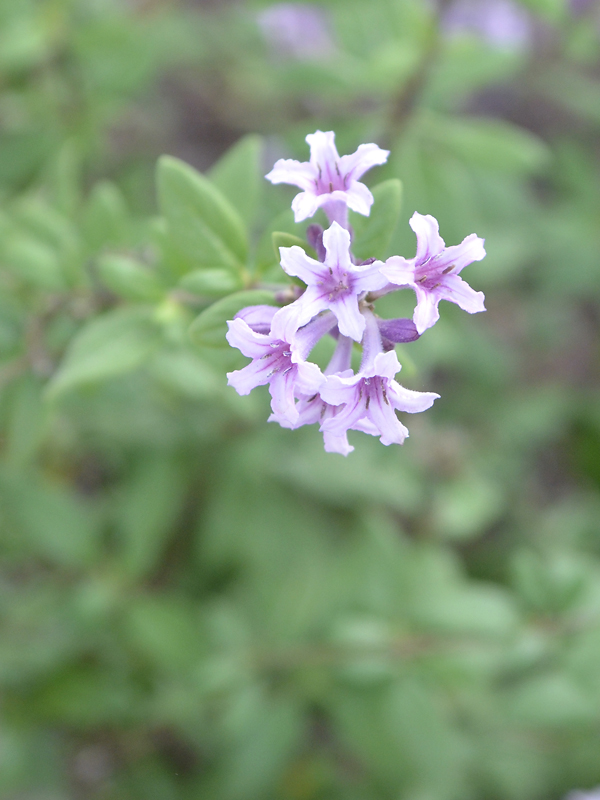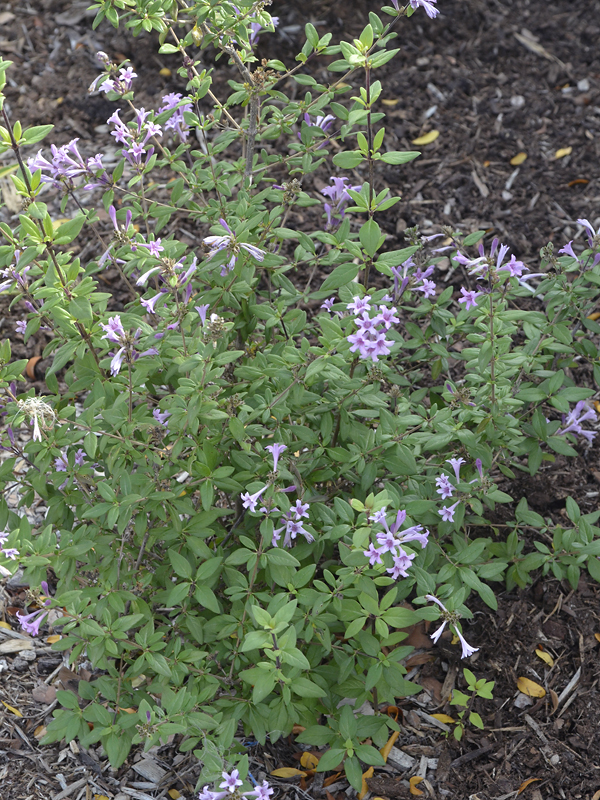
Woody > Leptodermis > Leptodermis oblonga > Leptodermis oblonga
Leptodermis oblonga
Himalayan Leptodermis, Baby Lilac Bush, Leptodermis, Star Flower
Mike's
Opinion


"
A favourite with its abundance of spring blooming flowers that last until late autumn. The Himalayan leptodermis can be compared to Syringa vulgaris, this is where it gets its other common name, the Baby Lilac Bush. Great for attracting pollinators, such as bees and butterflies with its fragrant small flowers.
Michael Pascoe, NDP., ODH., CLT., MSc. (Plant Conservation)
"
| Family |
| Rubiaceae |
| Genus |
| Leptodermis |
| Species |
| oblonga |
| Category |
| Woody |
| Type |
| Shrub (deciduous) |
| USDA Hardiness Zone |
| 5 - 9 |
| Canadian Hardiness Zone |
| 6a - 8b |
| Temperature (°C) |
| -29 |
| Temperature (°F) |
| -20 |
| Height |
| 30 - 45 cm |
| Spread |
| 60 cm |
Photographs
Description and Growing Information
Flowering Period
| General Description |
| Leptodermis oblonga is a flowering deciduous shrub that prefers partial to full sun. This shrub has petite, fragrant lilac-like flowers which bloom all summer. It is a compact shrub that grows in mounds; it is quite hardy and deer resistant. |
| Landscape |
| Uses include mass plantings or groupings, hummingbird plantings, edging walkways and planting in perennial garden beds. |
| Cultivation |
| Grows in well drained, fertile soil in an area where it will receive full to partial sun. |
| Shape |
| Rounded to mounding. |
| Growth |
| Medium |
| ID Characteristic |
| This compact, dwarf-mounding shrub has purple-pink fragrant, tubular blooms that resemble lilacs. It also holds small, long, oval, green leaves that lack petioles. |
| Pests |
| Relatively pest free and deer resistant. |
| Habitat |
| Native to northern China. |
| Bark/Stem Description |
| The stems are brown, and have a small diameter so the bark is not very notable. |
| Flower/Leaf Bud Description |
| Tiny, light green to brown. |
| Leaf Description |
| Small green oval leaves that are sessile. |
| Flower Description |
| Petite lavender-like flowers that are very fragrant. They bloom from late spring through the summer to early autumn. |
| Colour Description |
| Showy violet-pink flowers, green leaves, and very subtle autumn foliage. Stems are brown. |
| Texture Description |
| Fine-textured. |
| Propagation |
| Propagated by seedings, cuttings, or layering. Leptodermis also produces root suckers. |

